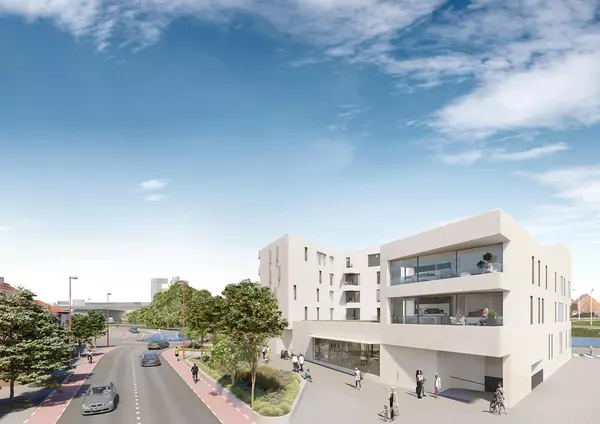A big change is coming to your SDG&E bill. Will you pay more or less? It depends
Your San Diego Gas & Electric monthly bill is about to change, due to a controversial piece of legislation passed three years ago by lawmakers in Sacramento and later implemented by the California Public Utilities Commission.
The change will overhaul the way all the investor-owned utilities in the state structure the electric bills paid by ratepayers.
For some of SDG&E’s 1.25 million residential electric customers, the makeover will result in some cost savings. But others will end up paying more each month.
The restructuring takes a two-pronged approach: It will reduce electricity rates for residential customers by an average of 10%, or 5 cents per kilowatt-hour. But the change also introduces what’s called a base services charge of $24.15 on every monthly bill.
The lower rates are designed to encourage customers across the state to adopt electrification measures in their homes. Those include buying electric vehicles and replacing natural gas appliances with electric appliances, such as heat pumps and induction stoves.
The $24.15 base services charge covers the fixed costs of utility infrastructure, such as transformers, wires and meters, as well as customer service to deliver electricity to and from homes.
To a lesser degree, it also helps fund “public purpose programs” such as the California Alternative Rates for Energy (CARE) and the Family Electric Rates Assistance (FERA) that assist low-income customers in paying their power bills. Some 26% of SDG&E customers are enrolled in the CARE or FERA programs.
What does the change mean for a typical SDG&E customer?
It varies, according to how much electricity you consume each month, where you live (be it coastal, inland, mountain or desert climate zones) and whether you are on the CARE or FERA discount plans.
For example, a chart from SDG&E estimates that a typical residential customer living in the inland climate zone who uses 400 kilowatt-hours of electricity in a month (which is about average for SDG&E’s service territory) will have a bill of $175 under the new base services charge structure. That’s $4 more than before. CARE and FERA customers would see a $4 reduction.
If a customer in the inland zone consumes 600 kilowatt-hours per month, their new bill will be $269, or about $8 less than under the old bill structure. CARE customers consuming the same amount of electricity would see a reduction of $10 while FERA customers would see their bills drop $15.
But a low-usage customer who consumes 200 kilowatt-hours would experience a $14 increase in their monthly bill, from $84 under the old system to $98. CARE customers using 200 kWh would see a $1 increase and a FERA customer would see a $4 increase.

According to the complete chart, net increases and decreases to bills are generally the same for SDG&E customers across other climate zones and usage amounts.
How we got here
The changes came as a result of Assembly Bill 205, which passed under questionable circumstances at the end of the 2022 legislative session.
Supporters say the makeover is designed to help lower-income Californians hit by the state’s ever-rising utility bills. Critics disagree, saying the new template is counterproductive and adds to the financial burden faced by beleaguered ratepayers.
The California Public Utilities Commission, on a 4-0 vote in May 2024, spelled out the specifics of how AB 205 would be implemented by the investor-owned utilities the commission regulates — SDG&E, Southern California Edison and Pacific Gas & Electric.
The commission, known as the CPUC, insists the new billing structure does not generate new profits for utilities, saying it “simply reallocates existing costs” among customers.
“This billing adjustment that’s required by the Legislature is really, at its foundation, a key lever to propel us toward our decarbonization goals,” CPUC President Alice Busching Reynolds said on the day of the vote. She called the decision “a very incremental, but important step towards this decarbonized future.”
California has set a target to derive 100% of its electricity from carbon-free sources by 2045 if not sooner.
Who is also affected?
Since the new rate structure relates to the costs of transmitting and distributing electricity, it will apply to customers enrolled in community choice energy programs across the state. That includes the two in the San Diego area — the Clean Energy Alliance and San Diego Community Power.
It also applies to customers with rooftop solar.
The overhauled rules affect residential utility customers only, not commercial or industrial accounts. It does not pertain to the natural gas portion of customer bills — only electricity.
Supporters and critics
“If you look at where the state is looking to go — towards space and water heating, appliances, electric vehicles — we expect (electricity) usage for the typical customer to increase over time,” said Adam Pierce, SDG&E’s vice president of energy procurement and rates. “So what this structure is really doing is helping modernize this billing structure that hasn’t changed in several decades (to match) what the new energy landscape in California is going to ultimately look like.”
SDG&E and the other investor-owned utilities have long called for creating a monthly base service charge.
“This is not a novel billing structure,” Pierce said. “This is utilized across the U.S. with many electric utilities, as well as other utilities here in California that are not regulated by the CPUC.”
For example, the $24.15 figure the commission landed on was largely based on the fixed charge the Sacramento Municipal Utility District — a government-owned power company not subject to CPUC regulations — imposes on its customers.
The California Public Advocates Office, the independent consumer watchdog arm of the CPUC, is one of the groups in favor of changing billing structure.
“It’s important to have what goes into customer’s bills more accurately reflect what actually drives utility costs,” said deputy director Michael Campbell. “Very importantly, it will reduce the cost of electricity so as customers increase their electric usage and shift away from gas, it will help encourage that policy shift we’re aiming for.”
Campbell said the 10% reduction in electricity rates will particularly help customers living in hot weather areas who have little choice but to run their air conditioners for long blocks of time during the summer, sending their electricity bills soaring. Those customers often have lower incomes than those with homes along the coast.
“Their household budgets can really get stressed if you’ve got a heat wave and you’re running your AC and there’s no respite at night,” Campbell said. “Your bill can change substantially, to more than $100 from one month to the next and if you’re living paycheck to paycheck … that can be pretty hard to adjust your budget when you get that unpleasant surprise when you open the bill for the previous month’s usage.”
But other groups say changing the billing structure is a bad idea.
“The problem is that there’s not a way to really know if folks are using a lot of electricity because they have an electric car that they’re plugging in … or they’re just running their AC all day long when they don’t need to be,” said Jenn Engstrom, state director of the California Public Interest Research Group, known as CALPIRG. “I understand there could be some benefit for people who are high-electricity consumers because they’ve decided to electrify their home, but it’s going to have that same benefit for people who are just wasteful.”
Engstrom pointed to SDG&E’s examples that show low-usage customers consuming 200 kilowatt-hours of electricity will see an increase in their monthly bills and said the change is misdirected.
“What we really want to see are efforts to actually rein in some of the overspending that the utilities are doing so that they don’t have to then put that back on consumers,” she said. “Their profit rates are some of the highest in the whole country. If we just work to lower those, that would be a huge potential for savings for consumers.”
When the CPUC voted, Commissioner John Reynolds (no relation to CPUC President Alice Reynolds), said the notion that the new system will discourage customers from energy conservation was “laughable.”
“California will still have … time-of-use rates that create incentives for efficiency and conservation during peak hours and also encourage moving your usage to cheaper times of the day,” he said.
SDG&E will introduce the new billing framework in the coming weeks and it will be reflected in customer statements starting in the October billing cycle.
Southern California Edison unveils its changes in November. A spokesman for Pacific Gas & Electric, citing “challenges” due to technical issues in its rollout, said PG&E’s changes will come in March.
It’s important to note that the new billing structure is the first iteration of AB 205. The CPUC will review how the plan is working and make adjustments, if needed.
“As part of this proceeding, we’ll be doing a lot of analysis, studying and reporting back to the commission about how this is working and what potential tweaks need to be made to make this more effective in the future,” Pierce of SDG&E said.
But critics say that leaves the door open for possible increases to the price tag on the base service charge.
“There’s nothing in what the PUC approved that prevents them from raising it next year to $50 or $100,” State Senate Minority Leader Brian Jones, R-Santee, said when the change was adopted. “The PUC has unchecked power on this thing.”
The murky origins of the legislation
AB 205 passed through the Legislature under circumstances that could be described most charitably as opaque.
It zoomed through both chambers in Sacramento late in the 2022 legislative session as part of a massive omnibus, or “trailer” bill that ran 21,633 words and covered a host of other items.
Most of the floor debate focused on a section of the bill that created a strategic reliability reserve to be overseen by the California Department of Water Resources and the portion establishing a fixed monthly charge on residential electricity bills was overlooked.
AB 205 was later signed into law by Gov. Gavin Newsom.
Once it moved onto the CPUC to work out the details, the size and scope of the base service charge became a subject of fierce debate because AB 205 originally called for setting the monthly fee based on the household incomes of customers.
SDG&E, for example, initially called for monthly charges as high as $128 and then revised the figure to as much as $73 per month for upper-income earners.
But questions about how to obtain and verify income data from customers — and potential net increases in some customers’ bills — put pressure on the CPUC.
“My constituents are pissed off,” Assemblymember Marc Berman, D-Menlo Park, said at a news conference in January 2024.
In the end, commissioners approved a 265-page proposed decision authored by one of the CPUC’s administrative law judges that took out any mention of income-based charges and set the monthly fee at $24.15 across the board.
Categories
Recent Posts










GET MORE INFORMATION


